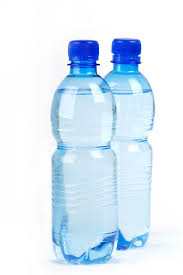What is it that makes our stomachs bulge out, makes us unable to lose weight, and keeps us just 10 pounds short of our goal when we’re trying so hard with the healthful eating and the exercising and the good intentions?
Excess sodium hanging out in the body in the form of some serious water weight.
That’s right. Some of what you are seeing in the mirror and on the scale has nothing to do with fat at all. See? Listening to the numbers on that evil scale is a farce!
I’ll be the first to tell you that salt has been my favorite food ever since I was a wee bitty child. I have been in the business of losing weight (and gaining weight) for over 10 years. Even after I figured out what foods keep my particular body healthy 3 years ago, I still dealt with weight plateaus and serious, I mean serious, bloating. I can look pregnant one day, and then impress people thinking I’ve lost a ton of weight the next.
That’s not fat loss folks. That’s water retention.
Let’s put this in perspective. One teaspoon of salt has about 2,325 milligrams of sodium. 400 milligrams of sodium, or 1/5th teaspoon of salt, causes you to hold on to two pounds of water. You may or may not think that this is significant on the scale, but think about it visually.

Two pounds of water is two pints or 32 ounces of water. Think about what a 16-ounce water bottle looks like. Now place 2 of those against your stomach, arms, thighs, or wherever else your body seems to pool the most weight. You could literally be carrying 20 pounds (or more depending on your size) of water weight on you if you consistently consume too much sodium.
I have literally lost 3.5 inches on my belly button and lower abdomen in one day by shedding excess, unneeded water weight.
It’s pretty impressive.
Have you ever started a diet or exercise regimen that was without a doubt going to make you lose weight, but you don’t drop a single pound? Not after the first couple days, not after the first 5 days, not during the second week… What the heck is going on here?!
Sodium is what’s going on.
Your body is not going to release that water if you keep your sodium-intake high. It’s a simple chemical equation. Your body keeps water relative to the amount of sodium that is present to keep your internal environment safe and functional. Once you relieve your body of pent up sodium it will be able to release that excess weight.
Okay, so how do we avoid this excess weight, avoid those frustrating plateaus, and start getting leaner immediately?
How To Have A Flat Tummy – Minus The Water Weight
1. Drop the salt! This includes soy sauce! Only ingest the necessary amount of sodium that you need to thrive, which is as little as 500 milligrams (1/4th teaspoon of salt) according to the National Heart Lung and Blood Association. Most of that can be received naturally through your whole food diet. It’s especially important to keep your sodium intake below 1,500 milligrams (1/2 teaspoon of salt) to 2,300 milligrams (1 teaspoon of salt) daily to avoid more serious issues than water weight, according to The U.S. Centers For Disease Control and Prevention.
Did you just read that? One half teaspoon to one teaspoon of salt is a maximum limit if you don’t want sodium-related complications over time.
Yeah. Let’s let that sink in.
2. Drink more water (but not with meals). Drinking water while you eat dilutes your stomach acids and impedes digestion, another culprit of belly bloat. The 8-10 glasses of water you should drink per day will be the vehicle for your body to carry out the excess sodium.
3. Exercise. When you sweat you excrete sodium out through your pores.
4. Eat potassium-rich foods like bananas as well as more fruits and vegetables in general to help balance fluids in your body.
Tips and Tricks To Ditch The Salt – For The Long Haul
Look, if you are disappointed in this finding, I feel you.
Truly I do.
Almost anyone who knows me could tell you that love salt in an unnatural way.
I used to could literally eat salt.
1. Wean yourself off of salt in baby steps, not all at once. Allow your tastebuds to adjust and reduce your salt intake again until you are well within the healthful amount. It’s not a race! Be kind to yourself so that this may naturally become a longterm change.
2. Reduce your canned and processed food intake. They trick you here! You usually can’t even taste the ridiculous amount of sodium they melt into these foods. If you still use packaged and canned foods to supplement your diet, make sure to check the sodium on the label (you’ll be surprised at how much they pack in there!), choose wisely, and know your serving sizes.
3. Use salt as a finishing touch rather than cooking it into foods. You’ll be able to taste the salt more fully and be able to consume less of it.
4. Try squeezing fresh lime on your food to try to mimic that salty taste that you might be craving for awhile until the addiction subsides. If you use it in something hot, make sure you add it at the very end so it doesn’t cook and become bitter.
5. Increase your usage of fresh herbs like garlic, ginger, cilantro, chives, basil, and parsley, and spices like cumin, chili powder, curry powder, cinnamon, to bring bursts of flavor to your meals.
6. Lower your consumption of super sugary foods so that your body doesn’t feel the need to balance out, triggering more salt cravings. Fruit is fine because it’s a balanced, natural food in itself.
I hope this is a valuable addition to your health and wellness journey. Please feel free to let me know how reducing your sodium intake has affected your life or discuss any challenges you might face in the process in the comments below.

